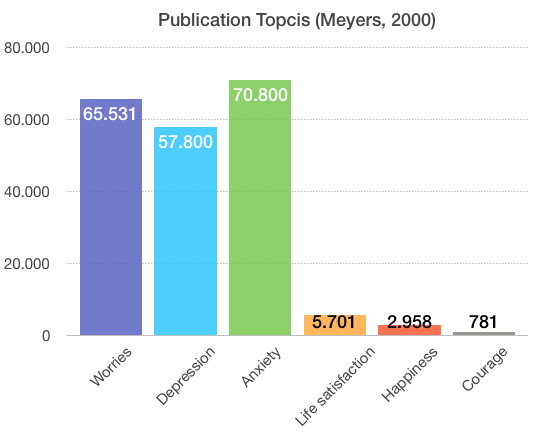What is Positive Psychology?



How can we be sustainably happy, raise our psychological well-being and flourish in our lives? These are questions asked in positive Psychology, a relatively young scientific field in Psychology.
Another effect of raising our psychological well-being is also the prevention of psychological disorders. In mid and high income societies around the world, life conditions are constantly improving. Yet, psychological disorders such as depression, burnout or anxieties are getting even more frequent.
The question as to how we can effectively cut down depression and burnout and also define ways to live a fulfilling life lead to the emergence of positive Psychology as a research field.
Early Origins of Positive Psychology
After the second world war, Psychology focussed on healing psychological disorders, thus eliminating dysfunctional states. Yet, this is just half of the journey. As the World Health Organization defined already in the 1950ies, health is not merely the absence of sickness. Reducing depression symptoms does not necessary lead to life satisfaction and psychological well-being. Here, positive Psychology sets in and asks, which factors help us flourish, beyond reducing psychological symptoms or disorders.
Even in 2000, most of the research publications in Psychology were about topics such as depression, anxiety, worries and other deficiency states.
As the psychologist Martin Seligman became president of the American Psychological Association (APA) in 1998, he used that position to initiate a wider paradigm shift in Psychology. In cooperation with Christopher Peterson, he composed a classification of character strengths and virtues (complementary to the huge manual of psychological disorders, DSM). In this “positive counterpart”, they outlined how things can go well becoming pioneers in the research and application of positive Psychology.

Goals and Topics of Positive Psychology
Specifically, topics in positive Psychology are for example:
- figuring out your own strengths, using them more frequently
- setting life goals which match your values, strengths and interests
- using and broadening your resources
- experiencing and using positive emotions
- constructively dealing with life challenges
- growing after difficult life situations
- living a self-determined life, taking responsibility
You can say, the motto is “build what’s strong” instead of “fix what’s wrong”.
Using a scientific approach allows for the developed theories, models and methods to constantly be monitored for quality and improved by evidence based data.
What positive Psychology is NOT
An unfortunate confusion people sometimes make is mixing it up with the concept of “positive thinking” from the 1970ies. This has no scientific base and holds the simplistic claim, the mere focusing on thinks you wish for while suppressing the rest would have positive effects (which obviously can’t be taken seriously from a scientific perspective).
Also, positive Psychology is not to be understood as “Happiology” — dealing only with the positive sides of life — it also tackles topics such as coping with challenging life situations.
Positive Psychology is best understood as a complementary addition to the clinical research in Psychology. Asking e.g. why some people do not develop burnout (instead of only asking why people develop it) brings additional perspective and insight.
I hope you enjoyed reading this overview of the fascinating positive Psychology field. If I could spark your interest and you are interested to learn more about it you’re welcome to sign up for my newsletter!
Join Science For Good Life Today.
Stay up to date
Join the Science For Good Life Newsletter to receive info about new topics, projects or products!